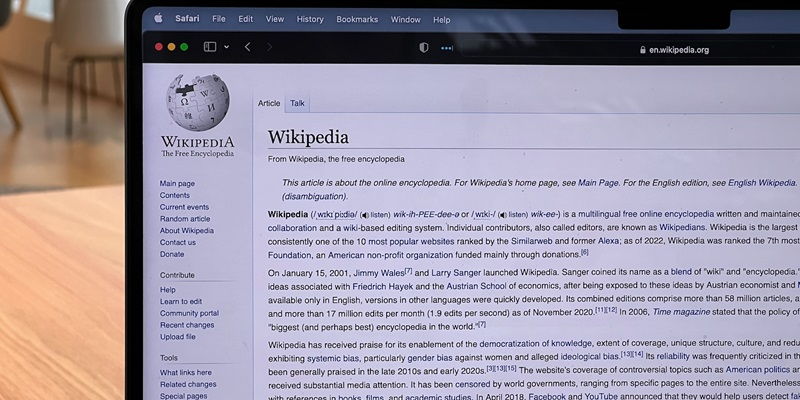The digital landscape is constantly evolving, and with it comes the emergence of new attack techniques that pose serious threats to individuals and organizations alike. In recent developments, security researchers at eSentire have uncovered a sophisticated technique known as the Wiki-Slack attack. Leveraging a formatting error in Slack’s rendering of shared Wikipedia pages, threat actors can manipulate unsuspecting users, redirecting them to malicious websites and potentially exposing them to browser-based malware.
Overview of the Wiki-Slack Attack Technique
The Wiki-Slack attack technique revolves around the exploitation of a formatting error in the popular collaboration tool, Slack. By skillfully modifying a Wikipedia article and adding a seemingly legitimate footnote, attackers can take advantage of Slack’s preview rendering functionality, enabling the execution of their malicious intent.
Description of the Attack Technique
Slack’s preview feature allows users to share snippets of articles, including Wikipedia pages, with their colleagues. However, a formatting error in Slack’s rendering process creates an opportunity for attackers to inject hidden links into the shared page’s preview, unbeknownst to users.
To initiate the Wiki-Slack attack, threat actors manipulate a Wikipedia article, introducing modifications that enable the injection of malicious content. These modifications often involve adding a legitimate-looking footnote at the end of the article’s first paragraph.
Once the Wikipedia article has been suitably modified, the attacker shares it within a Slack channel or direct message. Slack’s formatting of the shared page’s preview unintentionally triggers the rendering of a hidden link, which remains invisible on the Wikipedia page itself.
Hidden Link Exploitation
Due to a formatting error, Slack mistakenly renders the hidden link contained within the modified Wikipedia page’s preview. This rendering anomaly fools unsuspecting users into believing that the shared article is safe and legitimate.
The presence of a hidden link not visible on Wikipedia can lead users to inadvertently click on it, expecting to be directed to the actual Wikipedia article. However, instead of reaching their intended destination, they find themselves redirected to an attacker-controlled website, where they may encounter browser-based malware.
Consequences for Unsuspecting Users
The ultimate objective of the Wiki-Slack attack is to steer unsuspecting users toward malicious websites crafted by threat actors. By enticing users to click on the hidden link, the attackers gain access to sensitive information, potentially compromising their systems or initiating further cyberattacks.
Once users are redirected to the attacker-controlled website, they become vulnerable to browser-based malware. These types of malicious programs can exploit vulnerabilities within users’ web browsers, enabling unauthorized access, data exfiltration, or the installation of additional malware.
Conditions Required for the Attack
For the attack to work, the second paragraph of the modified Wikipedia article must begin with a top-level domain (such as .com, .org). This triggers Slack’s rendering anomaly, contributing to the hidden link’s visibility in the shared page’s preview.
To maximize the chances of users interacting with the hidden link, attackers strategically position the reference to the footnote and associated conditions within the first 100 words of the Wikipedia article. This placement ensures that they are included in the rendered preview, luring users into clicking on the hidden link.
Attack Scalability and Preparations
To broaden their attack surface and increase the likelihood of infecting a target of interest, threat actors must modify several Wikipedia pages with the necessary content. Additionally, registering domains that align with their attack objectives helps facilitate the redirection process.
To optimize their attack strategy, attackers typically identify high-traffic Wikipedia pages that are frequently shared within Slack channels or direct messages. By leveraging the popularity of these pages, they maximize the potential reach and impact of their Wiki-Slack attack.
Techniques to Enhance Success Rate
Attackers may conduct extensive research on their target to gather insights into their interests, preferences, and habits. This knowledge helps tailor the Wiki-Slack attack’s bait effectively. Additionally, familiarity with Slack’s interface and usage patterns allows attackers to refine their techniques for maximum success.
Threat actors can exploit advanced language models to generate plausible modifications to Wikipedia articles that seamlessly blend into the original content. This use of sophisticated language modeling technology aids in evading detection, making the attack more convincing and increasing the likelihood of user engagement.
Mitigation and Preventive Measures
Organizations should educate their users about the risks of browser-based attacks, emphasizing the importance of scrutinizing shared links before clicking on them. By promoting a security-conscious culture, users become more vigilant and less likely to fall victim to such attacks.
Robust endpoint monitoring solutions can detect and flag suspicious browser behavior, providing early warnings of potential cybersecurity threats. This proactive approach enables security teams to respond promptly, mitigating any potential damage caused by an attack.
Incorporating Cyber Resilience into Organizational Processes
Adopting a cyber resilience mindset involves implementing comprehensive security measures, conducting regular vulnerability assessments, performing incident response drills, and regularly updating software and systems. By prioritizing cyber resilience, organizations improve their ability to withstand and recover from cyber attacks.
The Wiki-Slack attack technique underscores the increasingly sophisticated methods employed by threat actors to compromise systems and expose user data. With the potential to redirect unsuspecting users to malicious websites and expose them to browser-based malware, this attack highlights the need for organizations and individuals to remain vigilant. By raising awareness, implementing effective security measures, and incorporating cyber resilience into everyday practices, we can fortify ourselves against such attacks and protect our digital ecosystems effectively.

